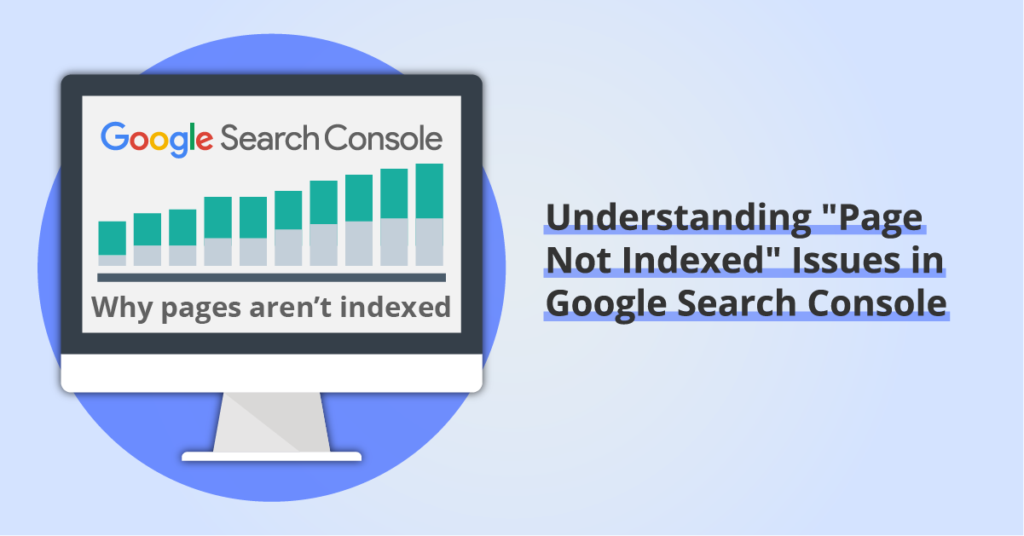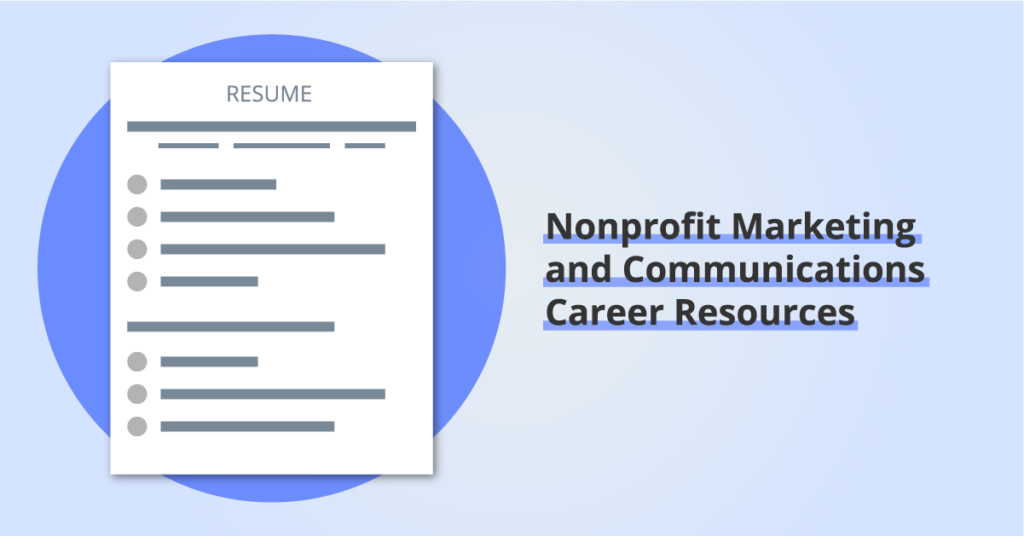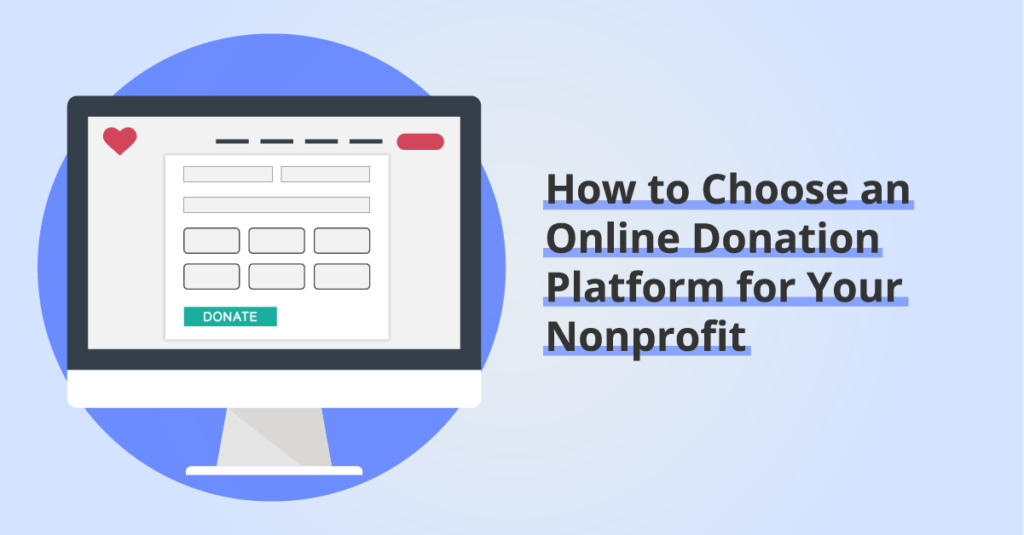Audience Journey Mapping: a Framework to Guide Your Digital Strategy
By: Ed Harris / Published: December 13, 2021 / Last updated: June 28, 2024
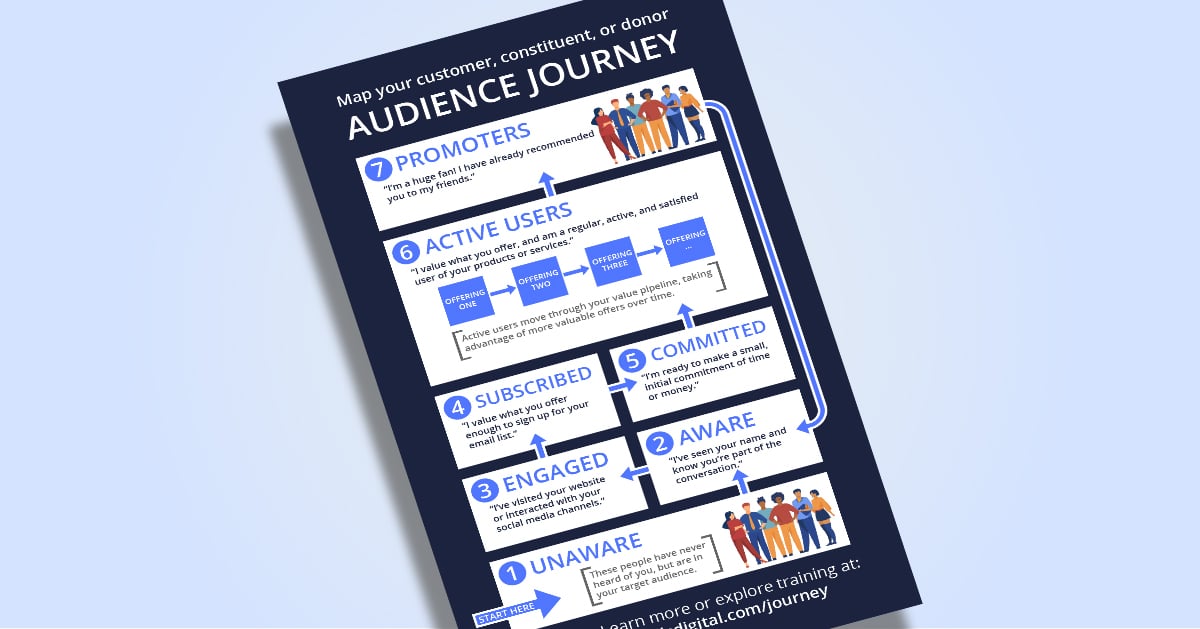
Knowing your audience isn’t just important for marketing.
Knowing your audience is a critical ingredient for a successful business, a high-impact nonprofit organization, or an effective advocacy campaign.
The Audience Journey is the core framework we use to help our clients get results. In this post, we share some thoughts about how we build Audience Journey Maps to help guide decision making in digital marketing strategy.
Why “Audience Journey” instead of “Customer Journey”?
We’re not reinventing the wheel here: plenty of marketing and business guides use customer journey or client journey language to describe a similar process.
However, we deliberately choose the audience journey terminology, for a few reasons:
- It nudges you to think about people before they become customers! Many of the most important steps in the journey take place before someone actually makes that first purchase (in the business use-case).
- Some important audiences will not become customers. For example, attracting the attention of journalists or investors might be so important to your strategy that it’s worth mapping their journeys, as distinct audience groups. But these groups will not become customers: their journey has a different endpoint.
- Audience Journey terminology makes the insights of traditional customer journey frameworks accessible to nonprofit organizations. For a nonprofit, audiences might include program users, donors, or volunteers. Each of those groups can be defined as an audience, with an audience journey map to include them in the strategy.
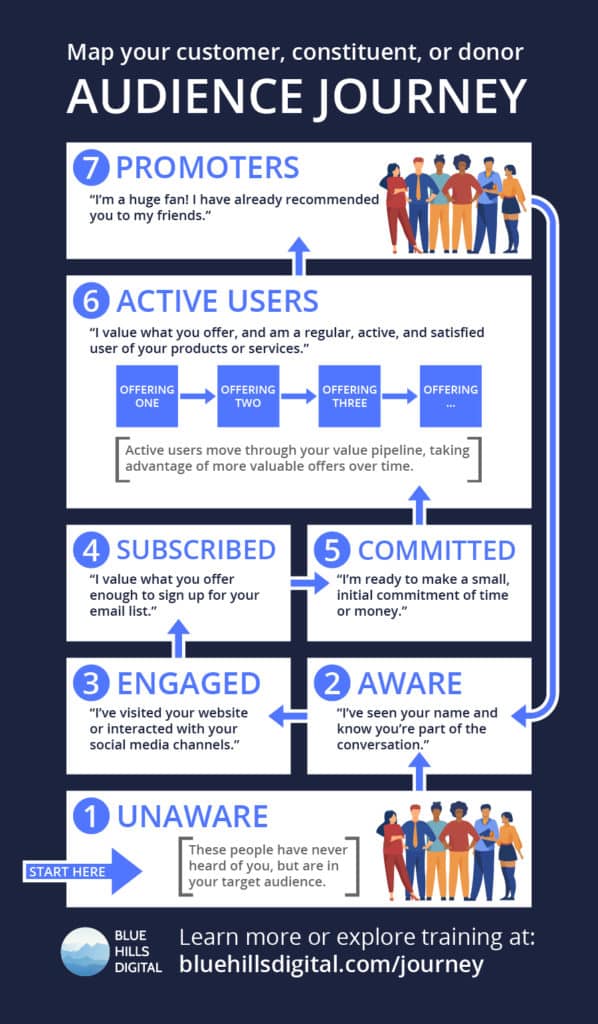
Introducing the Audience Journey Framework
Let’s dive into the framework. In our visual, the journey starts at the bottom of the diagram and audience members work their way up to the top.
In the sections below we review each of the seven stages, asking:
- What are audience members at this stage thinking about your organization or business?
- What actions do you want these audience members to take to move them towards the next stage?
- What metrics can you use to track your marketing efforts at this stage?
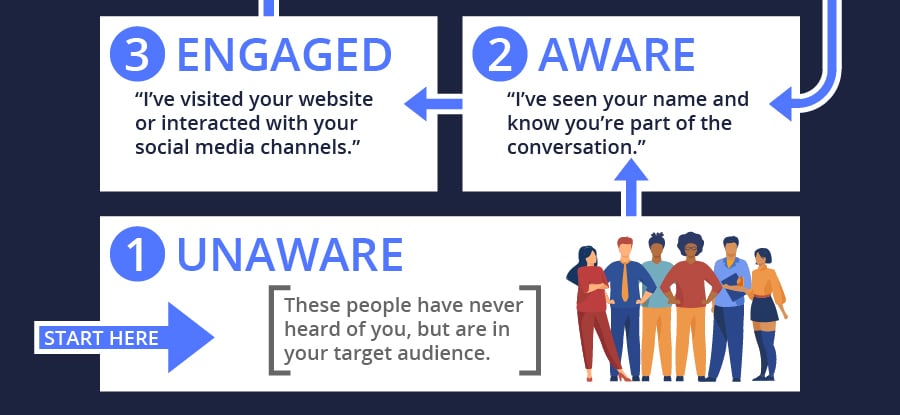
Stage 1: Unaware
This stage is super-important, and it gets left out of lots of conversations about “marketing funnels”, which typically start with an “awareness” stage. We think it’s worth spending some time defining your unaware audience before going any further.
Specifically, people in your unaware audience share two characteristics:
- They ARE in your target audience, however that is defined. For a business, they might be potential customers for your products or services. For a nonprofit, they might be potential clients, or potential supporters or donors who care about your mission.
- They ARE NOT aware of your business or organization. That’s right. If you stopped a member of your unaware audience in the street and asked them if they are familiar with your business or organization, the answer would be “no”.
It’s hard to understate the importance of getting to know your unaware audience.
Find out what motivates them. What they care about. Find out where they hang out, in person and online. Find out what publications they read. Who they follow on social media. Try to approximate the number of people in your unaware target audience (sometimes referred to as your “total addressable market”). This number becomes a helpful reference point as you define goals for moving people into your audience journey.
All of this research activity falls under the heading of audience intelligence, and if you’re not doing it already, start doing it!
Stage 2: Aware
You guessed it. The first transition for audience members to make is from being unaware of you to having some awareness. Here are some common ways for this initial awareness to develop:
- Seeing your content on social media posts
- Seeing your content in search engine results
- Seeing or hearing you speak (perhaps on a podcast or at a conference)
- Word of mouth: hearing others talking about you
- Reading about you in content produced by someone else
If you’re doing a good job raising awareness in the places or communities where your audience hangs out, audience members in stage 1 will start hearing your name again and again in conversations about the niche or sector where you work. Slowly, over time, they’ll become familiar with your name. The desired end state here is for audience members to recognize your name, and recognize that you are a leading voice in conversations in your field.
The actions we want users to take to move from stage 1 to stage 2 are simply seeing your content. This means you need to be visible and active in the places where relevant conversations are happening. Use your audience intelligence research to find those conversations and start contributing in places where your audience is already hanging out.
You may also want to consider paid advertising to build your aware audience.
Because we’re simply focused on visibility and repeat exposure, the high-level metric to track here is impressions. Think about how often a member of the stage 1 unaware audience might need to see your content to move into the stage 2 aware category.
Stage 3: Engaged
Once audience members are aware of you, the next stage is to encourage them to engage with your content. Don’t get ahead of yourself — we’re not jumping to a purchase or a donation — we’re talking about smaller steps like:
- Following your accounts on social media and commenting on your posts
- Clicking through to your website and reading a blog post
The defining characteristic here is that the audience members have moved beyond simply being aware of you as a voice in the conversation. They’re starting to seek out and engage with your content, either on social media or by visiting your website (all of which fall under the category of your “owned media”).
At this stage we can look at engagement metrics:
- On social media, this might include follower growth, post engagement (reactions, comments, shares), and click-through rate (for posts that link to your website)
- On your website this can start as simple as session count, and can go deeper into percentage of return users and quality metrics like time-on-site, bounce rate, and page depth.

Stage 4: Subscribed
The subscription step is a significant milestone: when audience members are engaged and regularly getting value from your content, it’s time to start inviting them to subscribe to your email list.
This is significant because for the first time, you’ll have a direct way of contacting your audience members. You’re no longer at the whim of a social media platform’s algorithm or when an audience member chooses to visit your website. Once they are a subscriber, you can alert them to new content they might find valuable, or share important news from your field.
Ensure this is a positive experience for your new subscribers! Find the right frequency of email contact: not so often you overwhelm, and not so infrequent you risk losing their interest. Always be relevant. Think about what drew audience members to subscribe before you start drafting an email.
The metrics here are simple:
- New email list sign-ups
- Email open and click-through rates (especially for new subscribers)
- Unsubscribe rates
Stage 5: Committed
This is the big-deal stage that might not feel like a big deal! When audience members move to the commit stage, they are getting enough value out of engaging with your content and receiving your emails that they are willing to test-drive an offering.
Emphasis on the test. They’re willing to make an initial commitment, either of time or money, to see what it’s like to become more involved with you.
For a business, this might be low-priced, entry level product or service. It might even be free, and simply involve a commitment of time for an initial consultation or sales call.
For a nonprofit organization, this might be attending an event, working a volunteer shift, or making a small, one-time donation.
To create metrics for stage 5, identify what counts as a small, initial commitment for you, and track how many of those are booked each month. This might be purchases of specific products or services, first-time volunteer shifts, or first-time donations.
What matters here is not the amount of revenue generated. What matters is that your audience members commit a small amount of time or money — two highly-prized resources — to exploring deepening their relationship with you.
Again: make sure this is a positive experience! Remember, this is a test-drive, and if you want the journey to continue the audience member has to come away feeling good about the commitment.
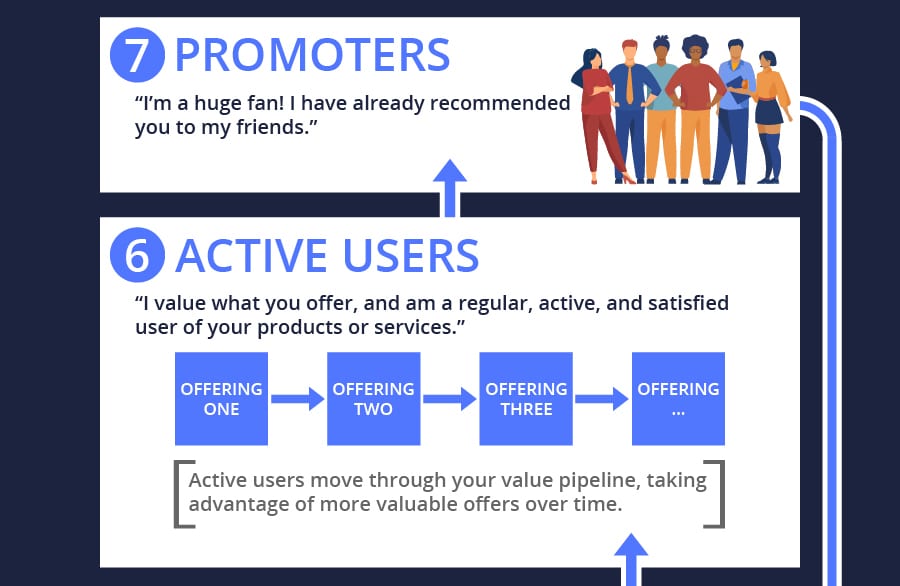
Stage 6: Active Users
This is it! When someone asks you to describe what your business offers or to describe your organization’s work, stage 6 offerings are probably what you focus on.
Once audience members experience you as trustworthy and as an expert in your field, they are ready to become regular, active users of your offerings.
- For businesses, this means they are becoming regular or ongoing customers.
- For nonprofit organizations, this means they are regular volunteers or recurring donors, or users who take action every time you call.
Within stage 6, try to categorize your offerings into a sequence that audience members can move through, if appropriate.
- For a business that sells service subscriptions, the sequence might involve aiming to upgrade customers to a higher-tier plan after a certain amount of time.
- For a nonprofit, you might identify that a certain proportion of volunteers tend to become recurring donors, who might then increase their giving over time. Or perhaps there’s a cohort of more experienced program users who can become mentors to newer users.
The metrics for stage 6 are about more traditional “conversions”: revenue generated per user, user lifetime value, and repeat purchases.
Nonprofit organizations can also get creative identifying non-monetary goals to track in stage 6.
The key criteria to measure here are how frequently audience members are taking advantage of what you offer, and how much value they realize from those experiences.
Stage 7: Promoters
The final stage co-exists alongside stage 6 for your most satisfied and loyal audience members. In stage 7 you build an audience of promoters: your biggest fans!
At stage 7, your audience members spreading the word about your offerings to their friends and networks, and are driving referrals to your organization.
We can think of these referrals as feeding back into your stage 2 aware audience. As your audience of stage 7 promoters grows, referral and “word of mouth” traffic can become a significant driver of audience growth.
Activity among stage 7 audience members can be challenging to measure. Consider tracking social media shares or positive posts and comments from active users, or monitoring for positive reviews on websites where you maintain a profile. Other options include tracking responses to “how did you hear about us” survey questions at various points in your onboarding process, or testimonial submissions from satisfied users.
We offer custom training packages to marketing or executive leadership teams to implement the Audience Journey Framework in organizational settings.
Trainings are offered in half- or full-day sessions and delivered virtually via Zoom.
To learn more and schedule a free informational call, get in touch.
I first wrote about this topic over at edharris.me. You can check out the original Audience Journey Mapping post here.
Image credits: featured image from UX Indonesia at Unsplash; graphic includes vector images from pch.vector – www.freepik.com.
Need professional support with your nonprofit marketing strategy?
We work with nonprofit communications pros and mission-driven marketers. Book a free consultation and we’ll walk you through the strategy framework we use to develop marketing and communication plans.
